| CHAPTER II.
POSTURE IN LABOR. Labor Among Primitive Peoples | ||
3. KNEELING.
The kneeling posture, like some other positions which appear to us peculiar, is a historical one. It is referred to in the Bible, as well as by the Roman poets. It was taught in ancient Rome, among the Arabs, and in Germany during the Middle Ages, and definite rules were laid down for the circumstances under which it should be resorted to. At this present day it is still, at times, adopted in the rural districts of our own States, and more frequently than we should suppose in our cities. It is that position which is, perhaps, most universal among our Indians, that is, among what we may call the blanket Indians, those who have not yet partially succumbed to the advances of eastern civilization. Some of our ablest obstetricians, Fellows of this Society, who have given me their opinions upon the kneeling posture in labor, differ in their views in regard to its advantages and disadvantages; to one it seems physiologically correct, and appears most practically to favor the expulsion of the child, whilst it is frowned upon by another as liable to be followed by hemorrhage. We, however, do not hear of this as a frequent occurrence among the Indians, where the position is so common; in fact, we neither hear of this nor any other accident consequent upon labor, not even of prolapse, which might be supposed to follow; probably, because the position is only assumed during the
If I may make a broad assertion, the kneeling posture seems most common among the red and yellow races; our Indians mainly being delivered kneeling, with the body inclined forward; whilst the Mongolians seem, as a rule, to retain the body more erect. I have classified the kneeling positions as follows:—
(a.) The body inclined forward.
(b.) This position overdone; that is, with the body thrown
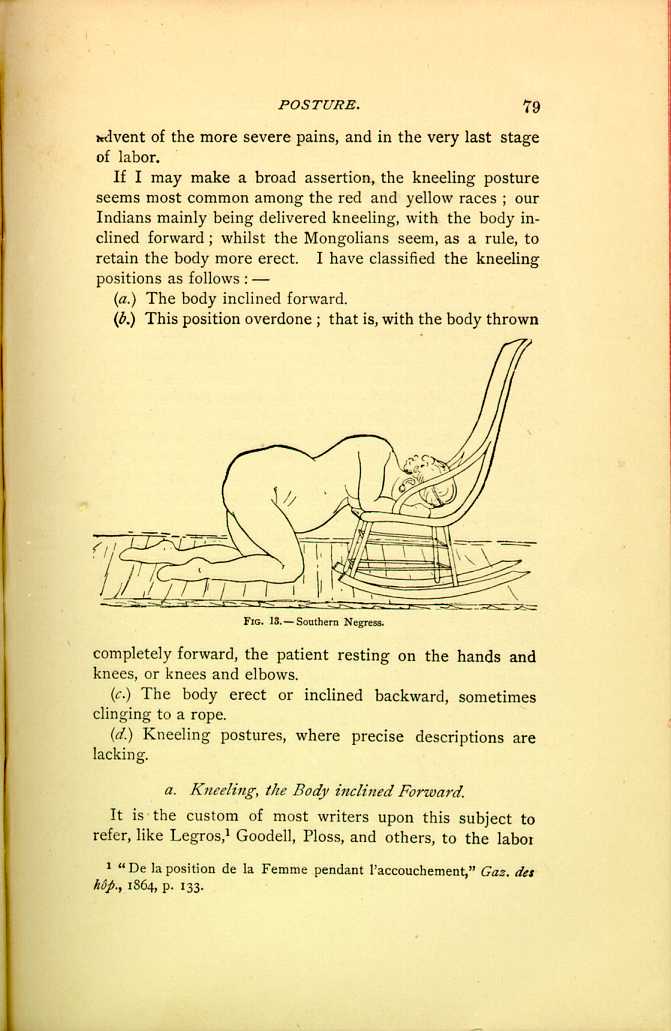
FIG. 13.—Southern Negress.
[Description: Pregnant woman kneels on the floor,
her face and arms resting in the seat of
a rocking chair. Black and white illustration.]
(c.) The body erect or inclined backward, sometimes clinging to a rope.
(d.) Kneeling postures, where precise descriptions are lacking.
a. Kneeling, the Body inclined Forward.
It is the custom of most writers upon this subject to refer, like Legros,[46] Goodell, Ploss, and others, to the labor
In a previous labor she had been confined in a similar position, resting head and arms in the lap of her mistress; precisely the same position which the squaws of the Umpgua tribe, in Oregon, are in the habit of assuming. Let us look in upon a scene of this kind.
The patient was found in a lodge, roughly constructed of lumber and drift-wood; the place was packed to suffocation with men and women, the stifling odor from sweat and smoke and stench of whale oil, rendered the lodge unendurable for more than a few moments together. The parturient, situated in the centre of the place, was entirely naked excepting a covering by a dirty blanket, which was thrown across her loins. Her head and shoulders were supported in the lap of an old squaw, while her thighs were stoutly pressed against the pelvis by a squaw on each side, who were engaged in crowding the uterus downward in a brutal manner with their clenched fists, occasionally giving it a lateral motion; another squaw sat between her knees, with her hands under the blanket, ready to receive the child when it came. The crowd in the lodge all the while kept up a deafening din by crying, shouting, pounding on tin vessels, and thumping up against the roof with poles,
Many of the Indian tribes follow this custom, the parturient woman assuming a kneeling position, head and arms resting in the lap of an attendant, or upon any convenient support: a stump, box, bed, or chair; so the tribes of the Quapaw Agency, the Peorias, Shawnees, Wyandots, Ottawas, and Senecas.[49]
The Indians of the Cattarangus Reservation are delivered in the same way, assuming this position just before the expulsion of the child, whilst in the earlier stages they sit or walk about as they please.[50] So, also, the Klatsops of northwestern Oregon, who, however, retain the body more erect, as a young woman assistant stands behind the parturient and clasps her under the arms and around the breast, supporting the patient and forcibly holding her up.[51]
The whites equally resort to this position; thus I hear of its observance in the western and southwestern portions of Missouri. Dr. Willis P. King, of Sedalia, writes me that he has found quite a number of cases where the women desired, during the last part of the second stage, to get up and kneel by a chair; and he says that all the women who have been in the habit of being delivered in this way were Pennsylvanians, of the Pennsylvania German stock, or, at least, that the suggestion had come from a Pennsylvania woman. Since he has seen a woman flood almost to syncope after delivery in this position, he condemns it severely.
I am a little astonished to see this position mentioned as originating in this country among the Pennsylvania Germans, because the only reference that I can find to the kneeling posture among the Germans (and we cannot in reality call the Fins Germans) is by Holst,[52] who says that the Esthen, in difficult cases, seek to hasten delivery by assuming
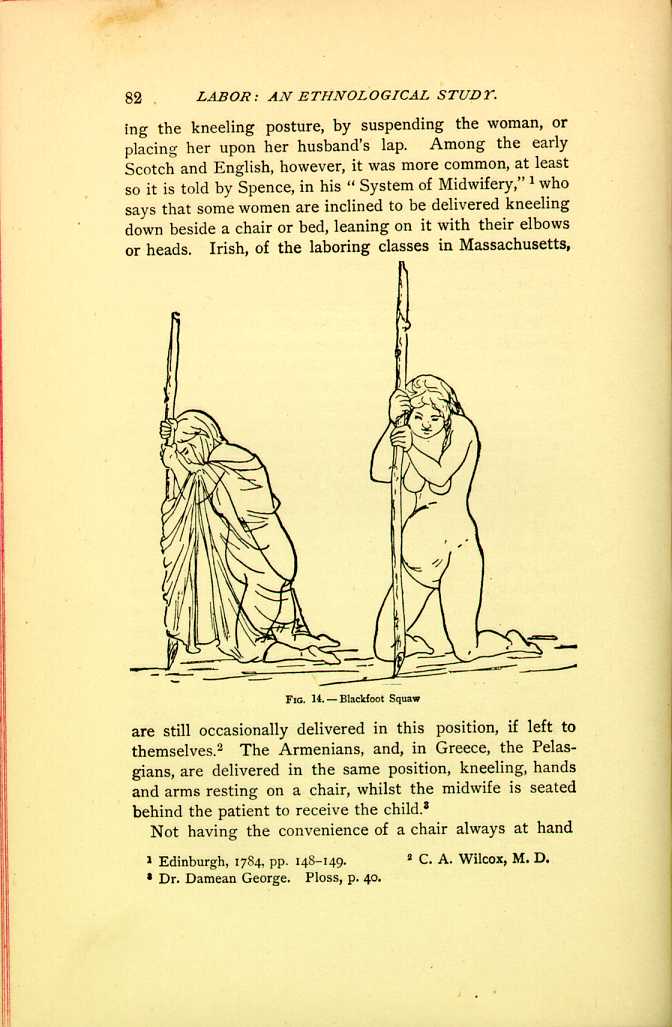
FIG. 14.—Blackfoot Squaw
[Description: Two pregnant women kneel, each supporting herself with a pole planted before her. Black and white illustration.]Not having the convenience of a chair always at hand
The same custom is observed among the Comanches and the Indians of the Uintah Valley, who, however, are not confined in their té-pee but in a temporary enclosure near by. The accompanying cut represents a Comanche squaw in labor, and in order that it may be fully understood I will give some of the details of this accouchement from the extremely interesting description of Major W. H. Forwood, Surgeon U. S. A., who was in attendance and kindly furnished the sketch: "A short distance outside the camp, and in the rear of the patient's family lodge, a shelter had been constructed of green boughs, six or seven feet high, by making holes in the hard ground with a wooden peg, and setting up brush or bushes, with the leaves on, around the circumference of a circle about eight feet in diameter. An
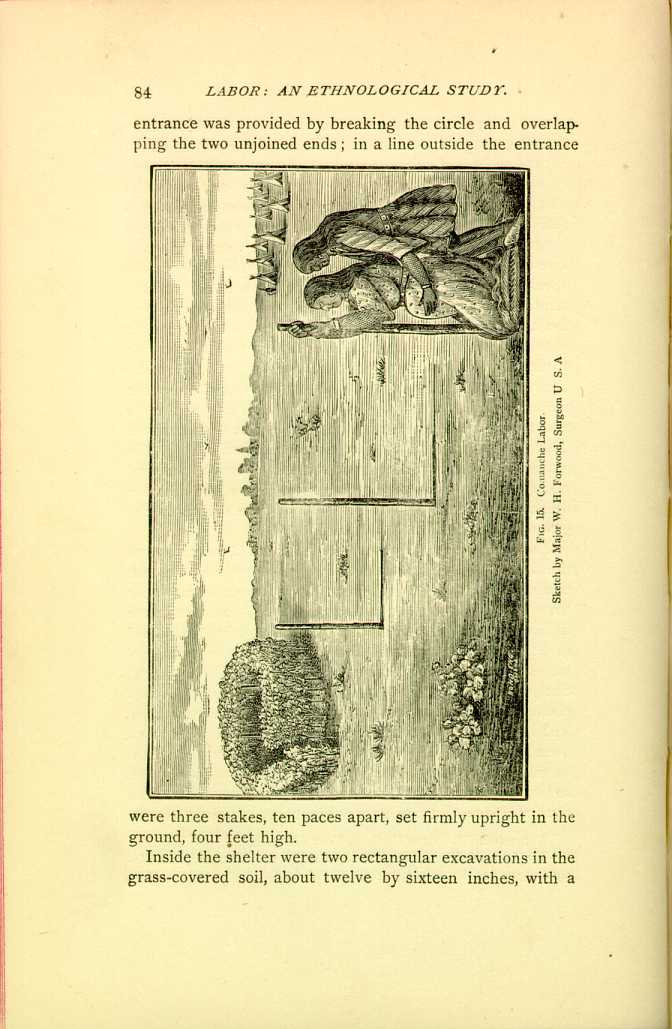
FIG. 15. Comanche Labor Sketch by Major W. H. Forwood, Surgeon U. S. A.
[Description: Pregnant woman kneels, supporting herself with stake planted before her, while another person stands behind her and presses against the sides of her abdomen. Circular brush shelter is nearby. Black and white illustration.]Inside the shelter were two rectangular excavations in the grass-covered soil, about twelve by sixteen inches, with a
I found my patient walking with her assistant, a female relative, up and down the line of stakes outside the shelter, stooping now and then to kneel at the nearest stake and grasping it with both hands during a pain; most of her time was spent in this way, outside the enclosure; occasionally she would enter to kneel over the hot stones or loose earth. During each pain she knelt down close to one of the stakes, bringing the front of her feet and legs against the ground and her knees a little apart, the body bent forward, face turned down, or sometimes up, at the severest part of the pain, and the hands, one above the other, grasping the stake on about a level with the head. The assistant stood behind, astride of or between the patient's feet, and stooping over, passed her arms around the body until her hands were brought over the front and lower part of the patient's abdomen; in this position she performed several manipulations with the palms of her hands and fingers, while the pain lasted, such as rubbing, kneading, etc., but most frequently a quick jerking or shaking upward movement, something like that of shaking a pillow into its case. The patient never assumed a recumbent position, and the moment the placenta escaped she sprang up, buckled on a stout leather belt, mingled with the crowd and soon disappeared, without apparently taking the slightest notice of her child.''
The Indians of the Uintah Valley Agency, Utah, observe the same customs with this exception, that they keep a kettle of hot water, boiling, within the enclosure or "Wick-e-up,'' of which the patient takes frequent and copious draughts during the labor, and as soon as the child is expelled she continues drinking freely of the hot water, rises to her feet, places a folded cloth to her abdomen, and
The natives of New Zealand kneel down upon a mat, the knees about two feet apart, the hands resting on a tree or stick, or clutching some hard substance, while if help is needed, the arms are twined about the knees of an assistant in order to press them against the fundus of the womb.[59]
The Dakota woman assumes a kneeling position during labor, unless extreme weakness prevents; she supports herself by a post driven into the ground, or any convenient means of support; the recumbent position, they think, retards the progress of labor.[60]
The rather vague information to be obtained from the Cheyennes, Arapahoes, and Eastern Apaches was to the effect that the parturient woman, as among so many of the Indian tribes, retires to the bush, where, if the labor is a normal one, she is delivered without any assistance, the position assumed being upon her knees, occasionally a reclining one. Dr. C. P. Allen writes me concerning the Chippewas, from the White Earth Indian Agency, that, if the parturient is of the wild or blanket Indians, a quantity of dry grass is spread on the ground in the té-pee, or house, if they have any; a pole six to ten feet long and three to four inches in diameter is placed on the backs of chairs or fixed across one corner of the room about the height of a chair, behind which, with it across her chest, the woman rests on her knees during the pains, sitting down in the interval. Those who are partly civilized assume a somewhat similar position but use straw overlaid by quilts or blankets.
I would here call attention to the fact that the Chippewa woman seems to draw horizontally upon this cross-bar and
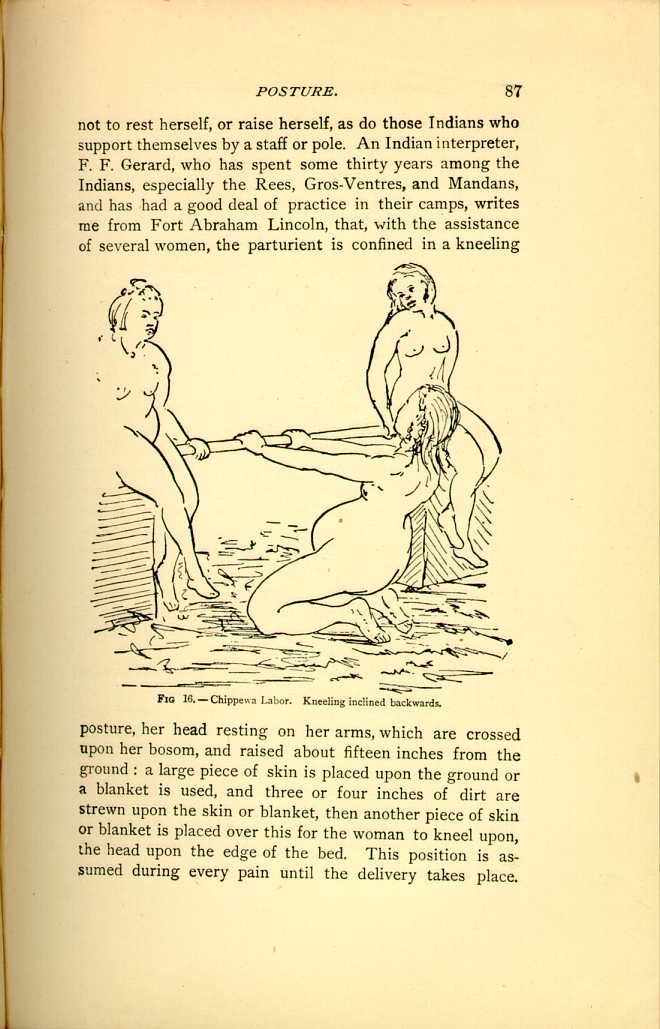
FIG 16.—Chippewa Labor. Kneeling inclined backwards.
[Description: Pregnant woman kneels and leans backward, grasping a horizontal pole held between two other woman. Black and white illustration.]From a very instructive letter, recently received from
Dr. N. Kauda, of Tokio, I see that the Japanese are not
unfrequently delivered in a kneeling posture; the description
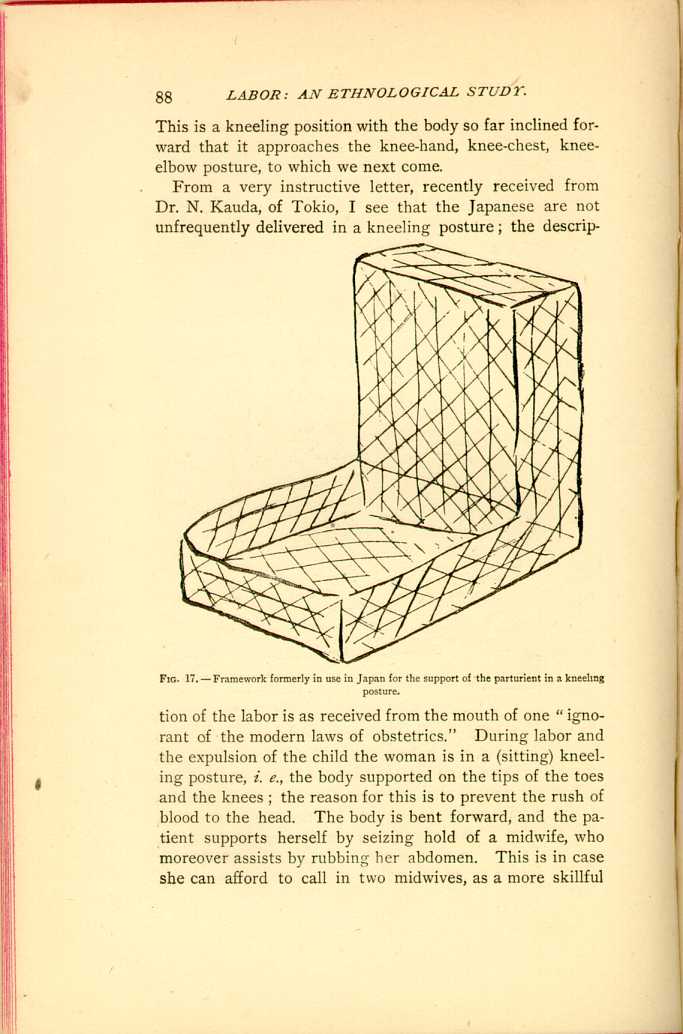
FIG. 17.—Framework formerly in use in Japan for the support
of the parturient in a kneeling posture.
[Description: Piece of furniture shaped like a chair
without legs, designed to support a woman in a kneeling posture. Black
and white illustration.]
Fifty years ago the patient was supported in her position
and the labor conducted in a framework (Fig. 17), but
now ordinary articles of bedding are piled up to support
the back (Fig. 18), as seen in the figure which represents
the posture just after delivery, and in this upright position
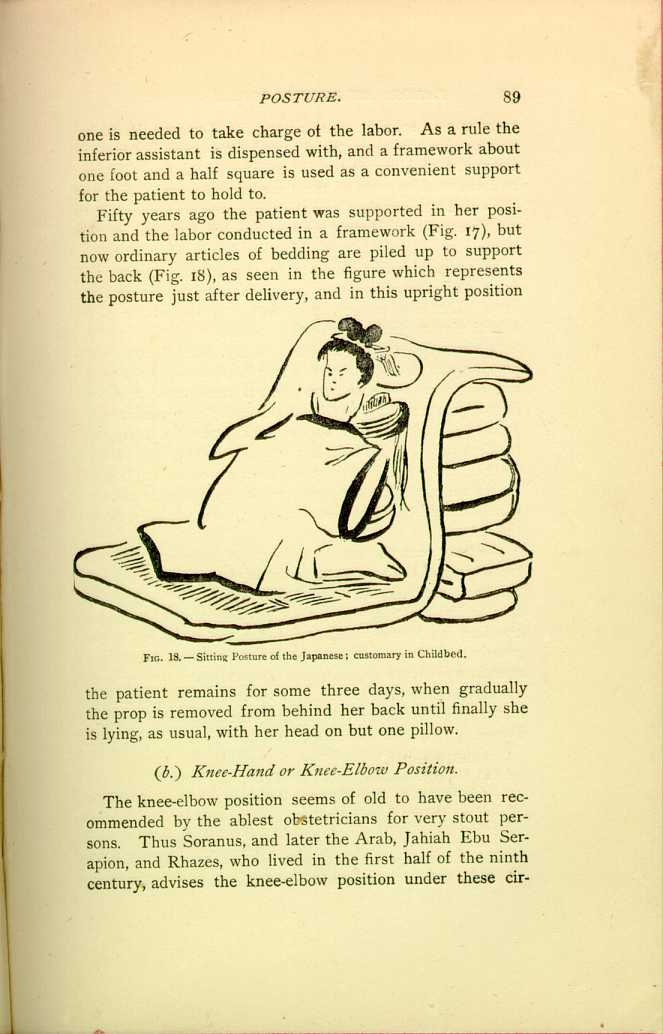
FIG. 18.—Sitting Posture of the Japanese; customary in
Childbed.
[Description: Woman sits on a blanket or thin mattress, and leans against a
pile of bedding. Black and white illustration.]
(b.) Knee-Hand or Knee-Elbow Position.
The knee-elbow position seems of old to have been recommended by the ablest obstetricians for very stout persons. Thus Soranus, and later the Arab, Jahiah Ebu Serapion, and Rhazes, who lived in the first half of the ninth century, advises the knee-elbow position under these circumstances;
In 1779, Hopkins objected to the lateral position and urged that the position on the hands and knees was the best.[64] Denman was of opinion that "this posture is instinctively sought by unassisted women.''[65] Whilst in 1791 that shrewd observer Charles White quoted Denman approvingly, and argued that the "knee-elbow position in natural labor prevented too great a pressure on the perineum.[66] According to Ramsbotham,[67] "the peasantry of Ireland placed themselves upon their hands and knees, and in Cornwall it is difficult to persuade the woman in labor to take any other posture than standing or on her knees.'' It is interesting to see how people carry these customs, which have been traditional among them for ages, across the seas.
We have seen the southern Negroes following the African ways, and the same may be observed among the Welsh, the Irish, and Germans; thus, Dr. H. C. Yarrow tells me that he had a patient once, a Welsh woman, who insisted on crawling on hands and knees while the pains were progressing, and who informed him that in Wales women frequently assumed this position or were delivered sitting upon the laps of their husbands. Irish women, who, as I am informed by several correspondents,[68] are in this country delivered in the hand and knee position, assert that this is
Major Charles R. Greenleaf, surgeon U. S. A., informs me that the Nez-Percés and Gros-Ventres women, who in ordinary labor are confined in a stooping posture, in cases where labor is protracted assume the knee-elbow position, whilst the patient's abdomen is encircled by a broad belt, upon which force is exerted by assistants, placed on either side of the patient, who scrupulously direct this force backwards and downwards during pains. The doctor himself witnessed such a case of protracted labor in a Gros-Ventre squaw, a primipara, who assumed the ordinary knee-elbow position and about whose abdomen a belt, often called the "squaw-belt,'' was placed.
The pressure exercised by the "squaw-belt'' among the Gros Ventre Indians is supplied by the pillow among the Creeks, and the encircling arms of an assistant among the Kootenais, whose labors are conducted in a most peculiar fashion, the parturient taking the knee-elbow position; she is on her knees, the face touching the ground; hands, one above the other, grasping a pole planted in the ground,
The Modocs, who as yet have assumed but few of the
customs of civilized life, are always delivered in this position;
their method is as peculiar as it is instructive, and is
worthy our most careful consideration; they maintain a
curved position, lying on the side, until the labor is nearly
completed, when they assume the position on their knees
and hands, which is continued until the child is
born.[71]
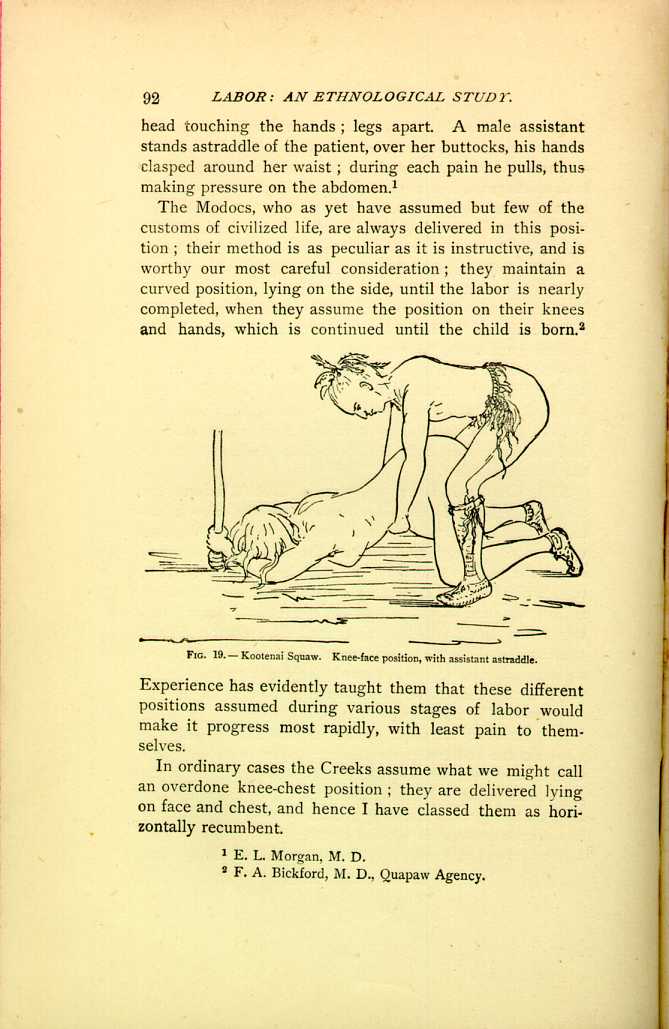
FIG. 19.—Kootenai Squaw. Knee-face position, with assistant
astraddle.
[Description: Woman kneels face down, gripping upright pole. Assistant
stands astride her with his hands just above her abdomen. Black and
white illustration]
In ordinary cases the Creeks assume what we might call an overdone knee-chest position; they are delivered lying on face and chest, and hence I have classed them as horizontally recumbent.
The natives of the Micronesian[72] and surrounding islands, like the Modocs, are delivered upon their hands and knees, sometimes in a recumbent position; certain of their old women act as midwives.
They roll about as they please until the very last stage the expulsion of the child, when they take this position, upon the hands and knees, and retain it usually until the placenta is expelled. They have no peculiar ceremonies, but apply to their ghost workers for intercession in their behalf in case of difficult labor or sickness. Massage and expression are used, especially for the expulsion of the placenta and after labor, to hasten the contractions of the womb, when the woman lies upon her back and her belly is kneaded. Difficult labor occurs seldom; and during thirty years' residence among the natives on the Micronesian Islands Mr. Sturgis, my informant, has never known of a single case of death of the mother in labor.
(b.)1.) Inverse Knee-Elbow Position.
This peculiar, and apparently strained, position has, like the knee-elbow position itself, been recommended for the relief of fat women in labor, more particularly by early Italian and German authorities. Thus Melli,[73] who however credits it to Mercurio,[74] "e prima di lui gli antichi maestri.'' The advantages assigned for this rather difficult position are, that the pressure of intestines and fat is thus removed; but as by the kindness of Drs. Fletcher and Yarrow, of the Surgeon General's Library in Washington, photographs of the original illustrations have been furnished me, they will be best explained in the words of Melli, p. 288, as follows:
"How a pregnant woman, who is very fat and corpulent, is to be placed and managed during labor.
"Difficult labor, caused by excessive corpulency, may be facilitated not only by the ordinary remedies prescribed before,
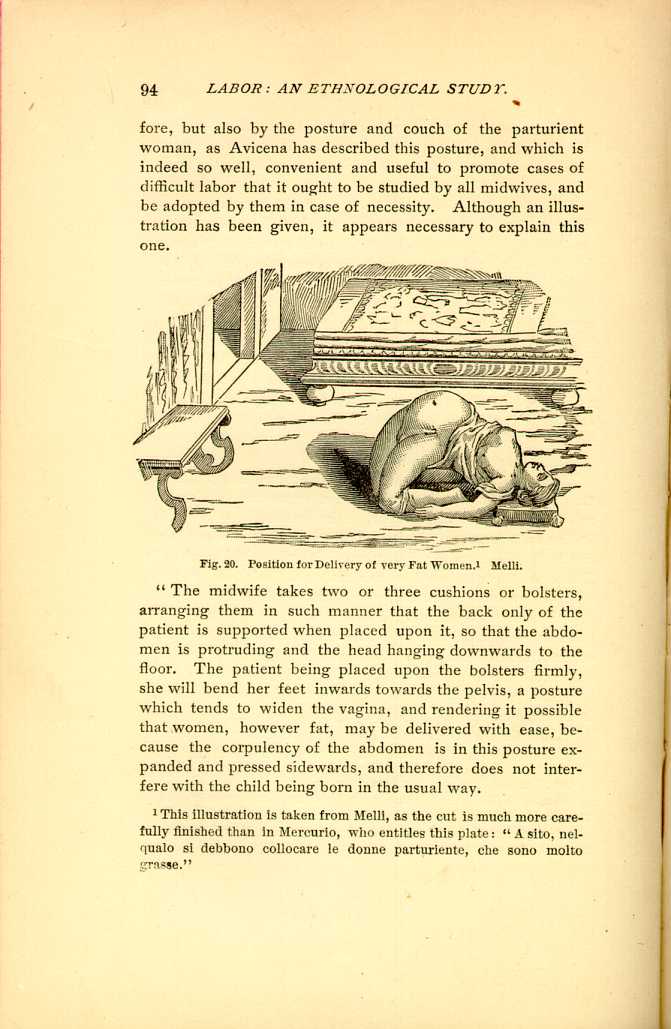
Fig.20. Position for Delivery of very Fat Women.[75] Melli.
[Description: Woman lies on her back, with her knees folded under her and her back arched. Black and white illustration.]"The midwife takes two or three cushions or bolsters, arranging them in such manner that the back only of the patient is supported when placed upon it, so that the abdomen is protruding and the head hanging downwards to the floor. The patient being placed upon the bolsters firmly, she will bend her feet inwards towards the pelvis, a posture which tends to widen the vagina, and rendering it possible that women, however fat, may be delivered with ease, because the corpulency of the abdomen is in this posture expanded and pressed sidewards, and therefore does not interfere with the child being born in the usual way.
"This posture and support is much more convenient, and
better in such a case than the best obstetric chair; for when a
parturient patient is sitting in an obstetric chair, her
abdomen, corpulency and intestines press upon the womb and
and fœtus, preventing its delivery and exit.''
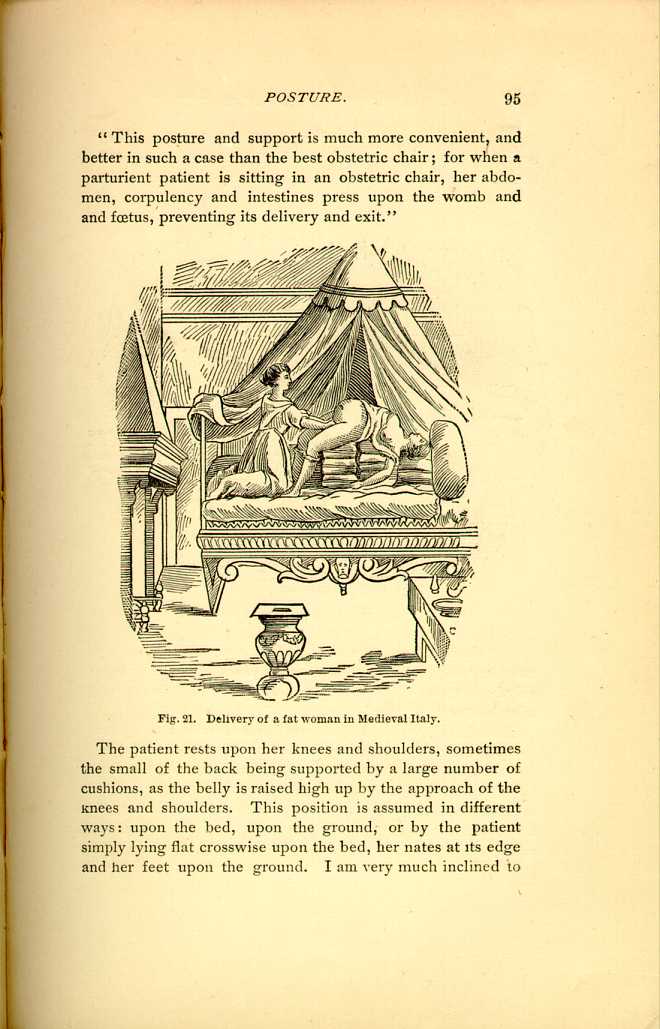
Fig. 21. Delivery of a fat woman in Medieval Italy.
[Description: Pregnant woman lies upon a bed, her back and head elevated upon
stacks of bedding. Another woman attends her.]
The patient rests upon her knees and shoulders, sometimes the small of the back being supported by a large number of cushions, as the belly is raised high up by the approach of the knees and shoulders. This position is assumed in different ways: upon the bed, upon the ground, or by the patient simply lying flat crosswise upon the bed, her nates at its edge and her feet upon the ground. I am very much inclined to
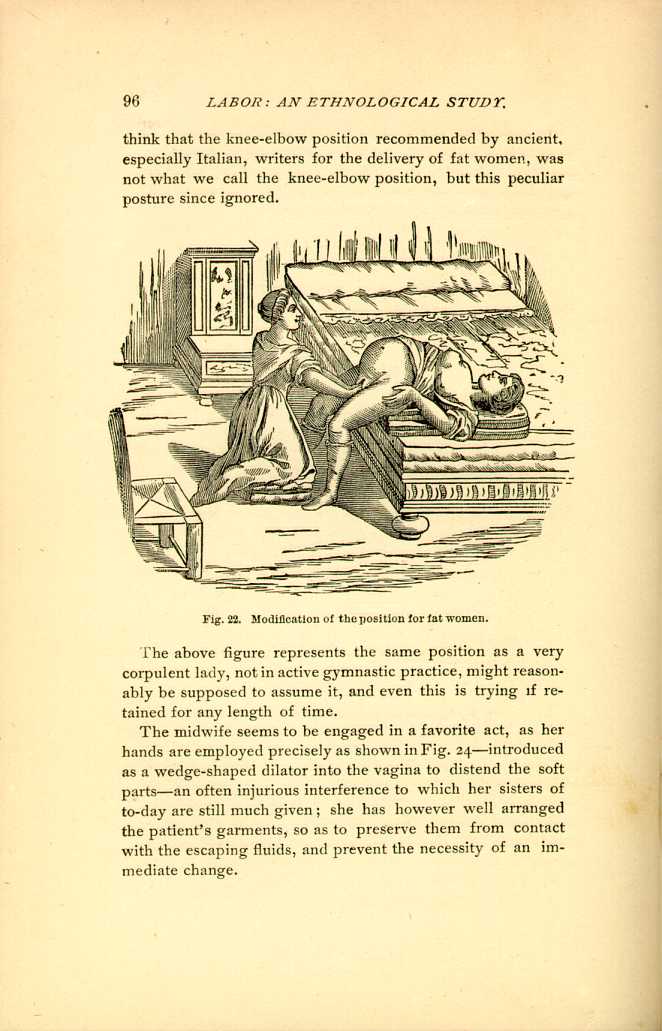
Fig. 22. Modification of the position for fat women.
[Description: Pregnant woman lies across bed, with her feet on the floor. Another woman kneels at bedside to deliver her. Black and white illustration.]The above figure represents the same position as a very corpulent lady, not in active gymnastic practice, might reasonably be supposed to assume it, and even this is trying if retained for any length of time.
The midwife seems to be engaged in a favorite act, as her hands are employed precisely as shown in Fig. 24—introduced as a wedge-shaped dilator into the vagina to distend the soft parts—an often injurious interference to which her sisters of to-day are still much given; she has however well arranged the patient's garments, so as to preserve them from contact with the escaping fluids, and prevent the necessity of an immediate change.
(c.) Kneeling, with the body erect, inclined backward, or partially suspended.
This, like other of those apparently peculiar positions which are fast yielding to the westward march of civilization and scientific medicine, was at one time not unusual in our States, and I will cite the early experience of Dr. Reamy in Ohio as characteristic of the practice thirty years ago; he says: "I have found in my practice ten or twelve different women, who had frequently borne children, before, who insisted, with a perseverance and determination that I dared not resist, in being out upon the floor, down upon their knees, leaning backward so that the buttocks almost touched the heels. The husband knelt behind the wife, with his arms around her, his broad strong hands acting as a pad for the abdomen, and making pressure during pains—à la Crédé—her shoulders resting against the man's chest. These women insisted that this was the only position in which they could be comfortably and successfully delivered.'' The same position, practically, is found among the Papagos. Among these Indians, "the position of the squaw, from the time the labor pains commence until the expulsion of the fetus and placenta, is a kneeling one, with the knees sufficiently spread to furnish comfortable lateral support to the body, which is erect. In the interval between the pains she is allowed to move about according to her inclination. In ordinary labors two women assist her. One of them places herself in a kneeling position behind the parturient woman, and with one knee pressing firmly in the lumbar region, she grasps with both hands the body of the patient immediately under the ribs in front. The other assistant places herself in a kneeling position in front of the woman, and with the palms of both hands rubs the abdominal wall down from the spine of the ilium to the pubes. It is interesting to note that they seem to appreciate the necessity and advisability of time and patience with primiparæ, as they do not resort to the same degree of pressure and friction which they employ in assisting multiparæ.[76]
The Yuma Indians vary this position somewhat.[77] The parturient woman is assisted by two others of long experience in the business. One of these kneels behind her, supporting her body in nearly an upright position, her arms passing under those of the patient and pressing or smoothing down the abdomen. The other assistant squats in front, between the feet of the patient, with her ankles crossed, and her shins pressed against those of the parturient woman, whilst she holds her by the hands or wrists. The posture of the patient is, therefore, with the shoulders high, the legs and thighs strongly flexed and abducted, which position is retained until the expulsion of the placenta. No bandage is used.
The Upper Klamath and nearly related Modocs of Oregon are usually delivered in a small lodge some distance away from the other houses. The parturient also assumes a kneeling position, supported by one old squaw, whilst another keeps kneading and rubbing her abdomen. Sometimes she varies her posture by sitting and pressing her feet against some support, while she bears down. If labor is tedious, they often sit over warm stones moistened with water, or, in other words, take a steam bath to relax the system. They also steam themselves occasionally for several days after the birth of the child.[78]
Precisely this same position is found among many of the Mongolians, especially the Tartars, if we may accept the authority of Hureau de Villeneuve.[79] The parturient moves about during the early pains, sometimes standing with her hands above her head, but as soon as the bearing-down pains begin she assumes the kneeling position last described, almost erect, supporting her body upon the hands, which rest upon the separated knees or thighs; the assistant behind supports her by seizing her under the arms, whilst the midwife rests upon one knee in front of the patient.
My attention once called to the subject, I examined my own collection, and found in it two images representing a woman in the erect kneeling posture, the knees somewhat separated, the hands resting upon the knees or thighs in precisely the same position as that assumed by the Mongolians, and probably the Yumas. It is not unlikely that these figures represent parturient women, and it is highly probable that the mythical Mound Builders, be they predecessors of our Indians, or older tribes of the same stock,
The kneeling, partially suspended, position is found among
the Indians and lower classes of Mexicans in the neighborhood
of San Luis Potosi. The labor is conducted in the
following way: a round stick of pine wood, eighteen or
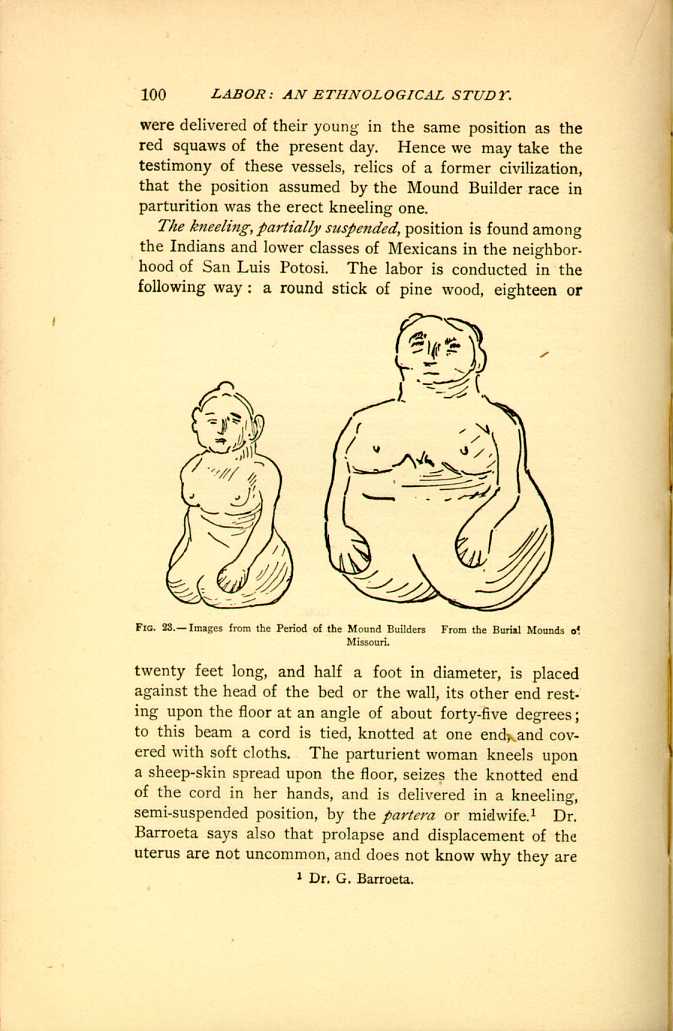
Fig. 23.—Images from the Period of the Mound Builders
From the Burial Mounds of
Missouri.
[Description: Two female figures in erect kneeling posture. Black and white
illustration.]
The lower classes of Northern Mexico speak the Spanish
language and profess the Catholic faith, but in all other
respects are Indians, and retain many Aztec customs; so
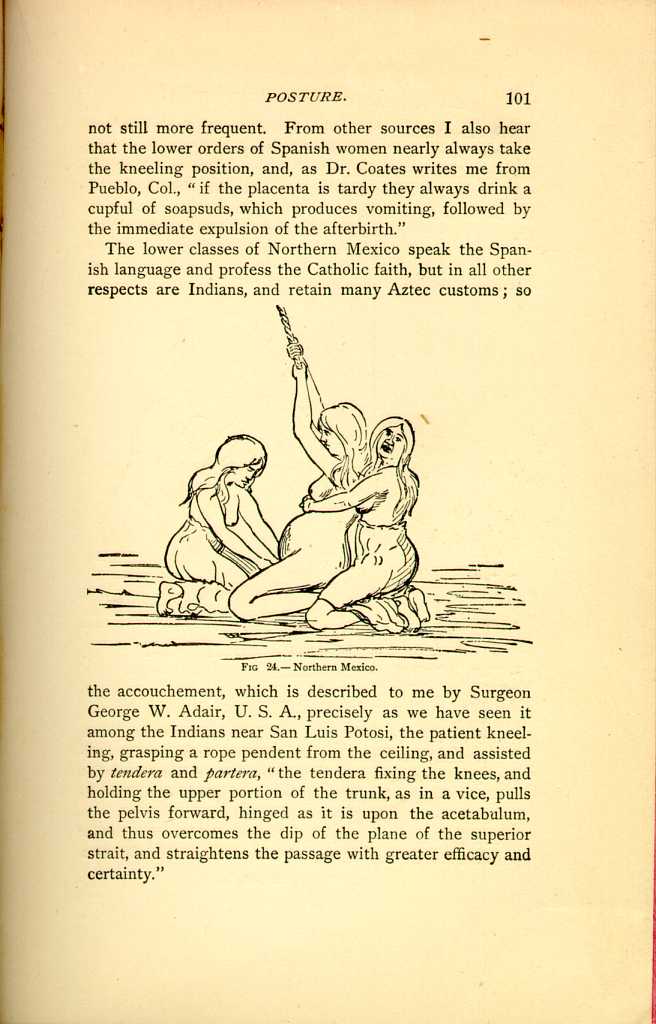
FIG 24.—Northern Mexico.
[Description: Pregnant woman kneels, holding onto a rope suspended overhead.
One woman kneels behind her, her hands clapsed above the abdomen, while
another woman kneels before her to assist delivery]
The American Indians on the frontier of Mexico follow
the same traditional method of delivery, hanging on a rope
suspended from a rafter, with the knees bent and just off
the ground. The rope, which is wrapped with cloths or
towels so as to make it softer, usually hangs at the edge of
the bed, so that the patient can stand on her feet or sit or
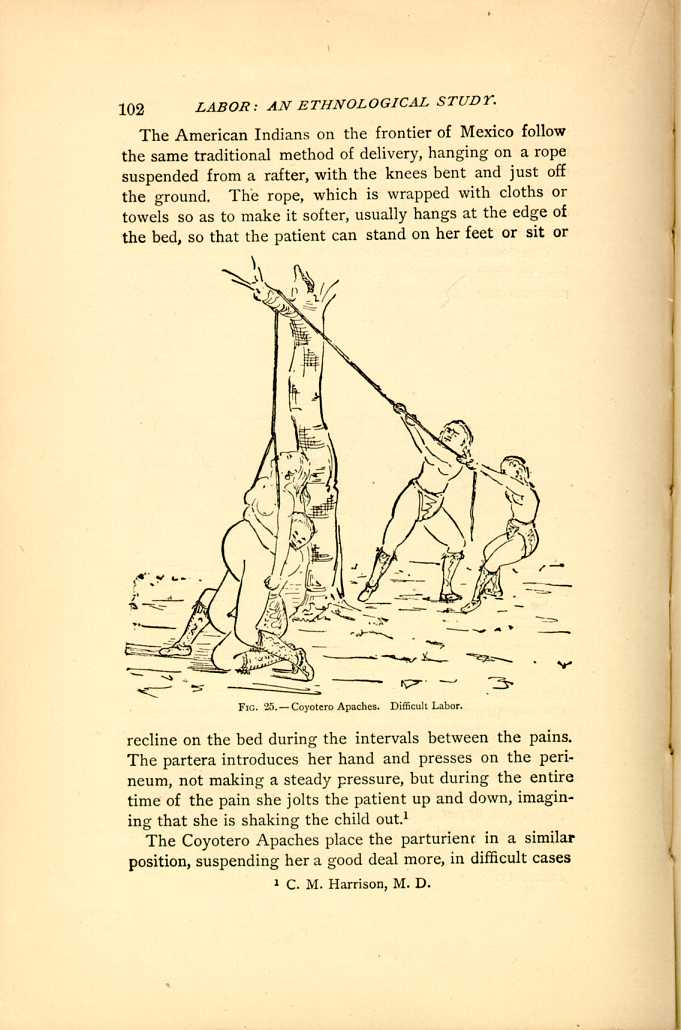
FIG. 25.—Coyotero Apaches. Difficult Labor.
[Description: Pregnant woman is supported by a loop of rope which has been
thrown over a tree branch in a pulley arrangement. Two assistants hold
the other end of the rope, while a third assistant hangs upon the
pregnant woman, placing pressure upon her abdomen.]
The Coyotero Apaches place the parturient in a similar position, suspending her a good deal more, in difficult cases
The Santee Indians are almost invariably delivered in a kneeling posture on the floor, with a bench or chair in front of them upon which they rest their arms, while sometimes they have a rope attached above by which they partially suspend themselves, just as the Mexican Indians and half-breeds do.[84]
(d.) Kneeling Postures, where Precise Description is Lacking.
Unfortunately, Dr. Ploss, in his valuable and interesting work, has failed to define precisely the positions assumed, and, as I have been unable to refer to the authorities myself, I will take the liberty of stating in a general way, upon the authority of Dr. Ploss, that the kneeling posture is assumed occasionally, at least, by women in labor in Nicaragua,[85] in Finland,[86] in modern Greece,[87] in Kamtschatka, in eastern Asia; and, if we go back to the Middle Ages, among the Abyssinians,[88] a people who originally came from Asia, where, as we have already said, among the yellow races the kneeling posture is a common one; also, under certain circumstances, in Rome; among the Arabs and Germans in the Middle Ages. Finally, in ancient times, among the Pelasgians, if some Greek authors are correctly translated.
If I may be permitted to refer to the somewhat vague
| CHAPTER II.
POSTURE IN LABOR. Labor Among Primitive Peoples | ||